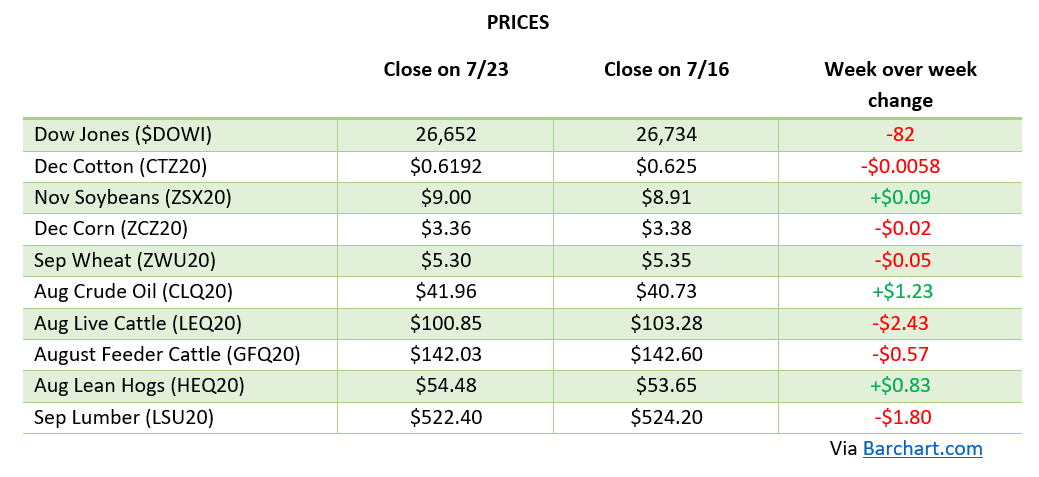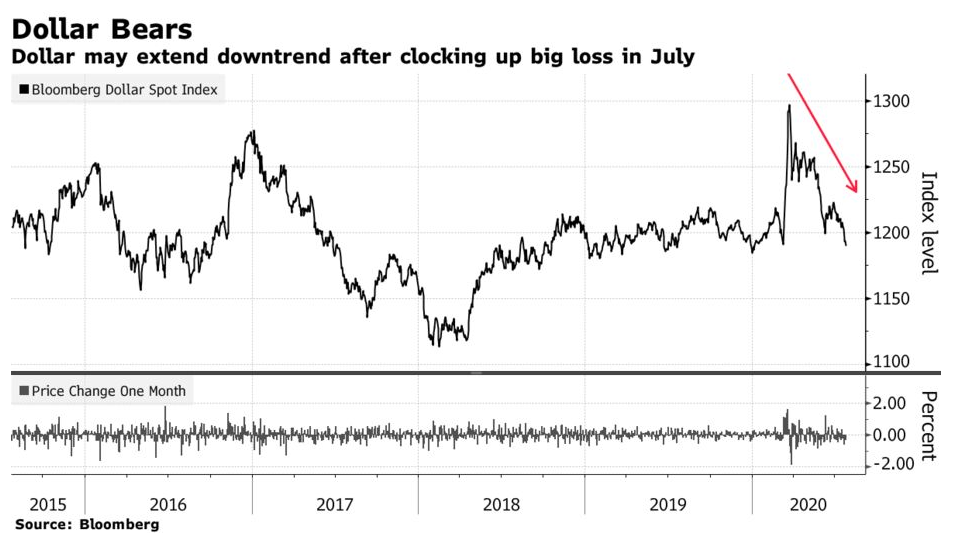Ag Markets Update: July 18 – 24

Corn held relatively steady this week after falling the past few weeks due to the June crop report. Exports have stayed consistent, but the lack of any weather problems is keeping corn in the range it is in. The cooler forecast with enough rain to support the crop is going to prevent upward price movement with the possibility of a 178 (trend line) yield still in play. China is the main buyer of U.S. Corn right now as major rains that are threatening the Three Gorges Dam area and throughout the Hubei Province have wiped out much of the non-U.S. crop.
The U.S. Department of Agriculture announced China’s largest ever corn purchase from the U.S. on July 14, totaling 1.762 million metric tons for delivery in 2020-21, and U.S. Grains Council President and CEO Ryan LeGrand tells Agri-Pulse that it’s more proof that demand is on the rise.
“We’ve always believed the demand is there,” LeGrand said. “They have been suffering from African swine fever, but they’re ringing the bell on these corn purchases.” (Ag Week)
Continued Chinese buying would be some good bullish news to balance out the bearish good weather news.

Soybeans gained on the week to reach the $9.00 mark again. China made several large purchases of U.S. soybeans this week despite the continued rising political tensions. The same destructive rains in the Hubei province that are wiping out corn will continue to have China buying U.S. ag products to make up for their potentially huge loses. The crop condition report this week was uneventful and as we approach the important stage for soybeans they look to be in good shape with the forecast being friendly as well. Beans have seemed to have had support at the 20 and 50 DMAs recently, so that should help moving forward even with the positive forecast.

A West Texas drought has been supportive for prices, but the lack of demand is the ultimate issue as prices can only move so high. If a healthy amount of rain moves into West Texas, look for prices to fall as a good yield and no buyers would present another problem. A weakening U.S. dollar may also provide some help as a lower U.S. Dollar means U.S. cotton is more affordable to other countries. In Other News see more info about the weakening U.S. Dollar.

U.S. Dollar
The Dollar has fallen 9.1% and made new 9 ½ month lows in today’s trade. With record U.S. debt and another stimulus package on the way, the Dollar has devalued endlessly by continuously running printing presses in DC. This is generally good for commodities as it indicates raw material inflation is on the horizon and that U.S. prices become more competitive as other currencies rally against the Dollar. Even though mildly helpful for the Ag industry, it’s not enough to fix the current oversupply problem.


